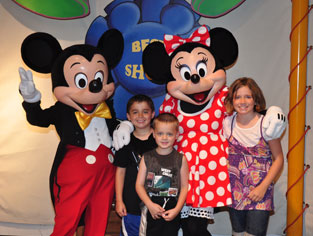Sedation Dentistry
What is sedation dentistry?
Sedation dentistry allows your pediatric dentist to provide a variety of dental treatments safely and comfortably for very young children,children who experience anxiety when visiting the dentist and/or special needs children.
Levels of Sedation
There are three sedative states at which your child's dentist can administer treatment: mild sedation, moderate sedation, and general anesthesia.
Nitrous oxide "Laughing Gas"(mild)- Some children are given Nitrous Oxide/Oxygen or what is sometimes called "laughing gas" to relax them for dental treatment. The goals of the nitrous oxide/oxygen inhalation include reducing or elminating anxiety, enhancing patient communication and cooperation, increasing tolerance for longer appointment, and reducing gagging.
Nitrous Oxide/Oxygen is a blend of two gasses, Oxygen and Nitrous Oxide. It is administered with a small breathing mask(scented with bubblegum, grape or strawberry fragrances), which is placed over the child's nose, allowing them to relax without putting them to sleep. The American Academy of Pediatric Dentisty recognizes this technique as a very safe, effective technique to use for treating children's dental needs. The gas is colorless, basically odorless and easily taken by breathing normally. It is quickly eliminated from the body. It is non-addictive. While inhaling this gas your child remains fully conscious and maintains all natural reflexes. Prior to your child's appointment:
- Please inform us of any changes to your child's health and/or medical condition.
- Tell us about any respiratory condition that makes breathing through the nose difficult for your child. It may limit the effectivesness of the Nitrous Oxide/Oxygen.
- Let us know if your child is taking any medication on the day of the appointment. This includes prescribed, over-the-counter or herbal medication.
- Your child should not have anything to eat or drink 2 hours prior to their appointment.
Moderate Sedation/Conscious Sedation — Used for patients with moderate dental anxiety, for young children with more extensive dental treatment and for children with special needs. Conscious sedation may include oral medication taken in conjunction with Nitrous Oxide. The area being worked on will be numbed with a local anesthetic. Your child will be able to breathe on their own. Your child may be quite drowsy and may even fall asleep, but they will not become unconscious. Typically this type of sedation will be performed in a dental office by the dentist or oral surgeon. Depending on the amount of treatment your child needs, the dental treatment may be broken up into 2 or 3 visits.
General Anesthesia — We routinely treat comprehensive cases in a hospital or outpatient setting. Outpatient general anesthesia is recommended for apprehensive children with severe anxiety, young children, children who require extensive treatment and children with special needs that cannot be treated in a traditional office setting because of different limitations. Dr. Peterson has priveledges at both Genesis Medical Center and Spring Park Surgical Center. Your child will be completely asleep for their dental work and all treatment will be completed at one time. An anesthesiologist or nurse anesthetist administers the anesthesia, medical staff/nurses monitors the child and Dr. Peterson completes the dental treatment.











